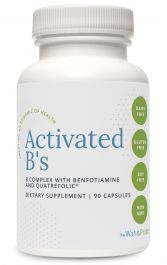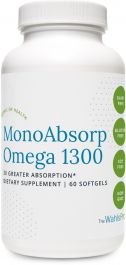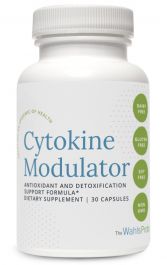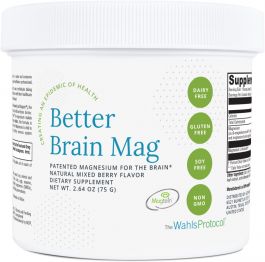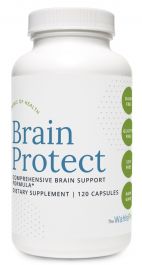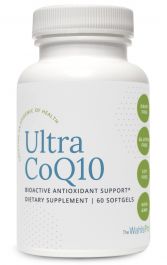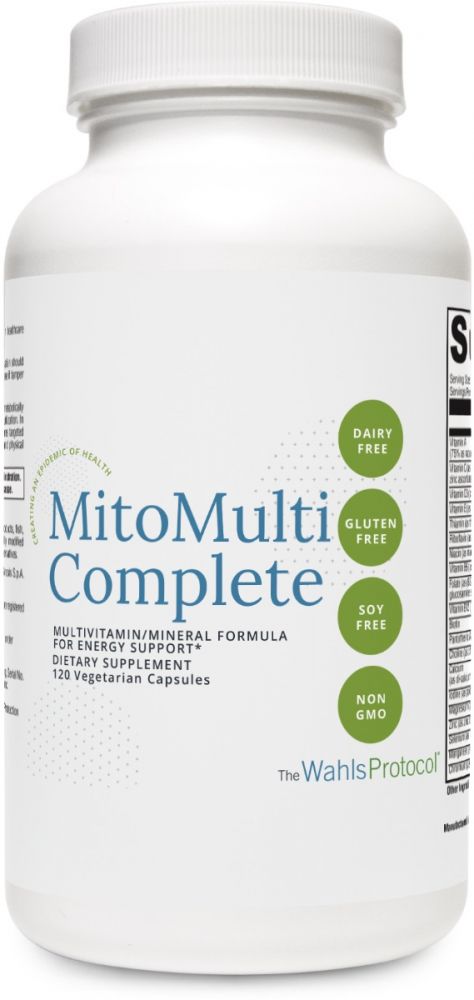
Mito Multi Complete
Mito Multi Complete provides enhanced support for mental and physical energy production and detoxification.
The mechanism of action of each of the ingredients unique to Mito Multi Complete is described below, followed by a discussion of the multivitamin and mineral components that provide the foundation for all of the ActivNutrient formulations.
- N-Acetyl-L-Cysteine is a derivative of the amino acid L-cysteine, which supports antioxidant activity in the body and enhances production of glutathione, a key component of antioxidant and detoxification enzymes.*[1]
- Acetyl-L-Carnitine is an amino acid derivative that plays an important role in fat and carbohydrate metabolism and energy production by transporting long-chain fatty acids into the mitochondria where beta-oxidation of the fatty acids produces energy in the form of ATP (adenosine-5’-triphosphate).*[2,3]
- Alpha-Lipoic Acid (ALA) is water- and fat-soluble and can be found inside and outside the cells, including inside the mitochondria where it functions naturally as a metabolic coenzyme. ALA also neutralizes free-radicals, helps regenerate vitamins C and E, increases tissue levels of glutathione, and helps maintain the proper ratio of reduced to oxidized coenzyme Q10 in the mitochondria.*[4,5]
- Milk Thistle Extract has a broad history of use in promoting liver health. Silymarin is the active constituent in milk thistle. It supports antioxidant activity, neutralizes toxins, and may protect hepatocytes’ genetic material. Its actions in the liver include maintaining healthy levels of fat peroxidation and fibrous tissue formation, supporting a healthy immune and inflammatory response, and promoting protein synthesis and normal regeneration of liver tissue.*[6,7]
- Theacrine is a purine alkaloid that is similar in chemical structure to caffeine but with different physiological effects, including no habituation potential. Theacrine is a dopamine receptor agonist, and its actions help increase dopamine signaling associated with attention, movement, learning, task initiation and completion, mood, and the brain’s “reward center.”*[8]
- Green Tea leaves contain polyphenols called catechins, of which the most biologically active is epigallocatechin-3-gallate (EGCG). Its studied effects include powerful antioxidant activity that protects against DNA damage induction of detoxifying enzymes support of gene signaling, which helps regulate cellular growth, development, and apoptosis and a potential role for encouraging healthy gut bacteria.*[9, 10]
- Broccoli Seed Extract contains a phytochemical called glucoraphanin that is metabolized to the biologically active sulforaphane. These two compounds have been widely studied for their positive effects on antioxidant activity, detoxification, cellular metabolism, and cell-life regulation. It has been suggested that they are the “missing links” that correlate a diet rich in cruciferous vegetables with good health.
- Resveratrol is a phenolic plant compound that has antioxidant activity, which protects the body from oxidative damage and provides protective support against the effects of cognitive decline. It is found in varying amounts in grape skin, some berries, plums, herbs, peanuts, and pine trees.
- Huperzine A (HupA) affects ion channels, an activity that has been linked to healthy learning and memory. HupA may influence levels of acetylcholine, one of the chemicals nerves use to communicate within tissues such as the brain and muscles. This effect has been shown to support healthy cognition in animal models and phase IV clinical trials.*[15,16]
- Shilajit is a mineral-rich phytocomplex with many bioactive components, including fulvic acid. It comprises rock humus, rock minerals, and organic substances that have been compressed by layers of rock mixed with marine organisms and microbial metabolites. In traditional Indian ayurvedic and siddha medicine, shilajit is known as a rasayana because of its rejuvenating qualities, which include heightening physical performance and easing fatigue. Modern research suggests that shilajit exhibits antioxidant activity, and its humic substances may inhibit heavy metal distribution, metabolism, and absorption.
- Bacopa monnieri is an Ayurvedic herb that has reported cognitive processing, cytokine-modulating, and anti-stress effects thought to be mediated through its free-radical scavenging capacity and its protective effect on DNA cleavage.
Serving Size: 4 Capsules
Servings Per Container: 30
- Vitamin A (75% as natural beta-carotene and 25% as retinyl palmitate) 400 mcg 44%
- Vitamin C (as sodium ascorbate, potassium ascorbate, zinc ascorbate, and calcium ascorbate) 45 mg 50%
- Vitamin D3 (cholecalciferol) 12.5 mcg (500 IU) 63%
- Vitamin E (as d-alpha tocopheryl succinate) 31 mg 207%
- Thiamin (as thiamine mononitrate) 3.5 mg 292%
- Riboflavin (as riboflavin 5’-phosphate sodium) 3.5 mg 269%
- Niacin (as niacinamide and niacin) 11.5 mg 72%
- Vitamin B6 (as pyridoxal 5’-phosphate) 3.5 mg 206%
- Folate (as (6S)-5-methyltetrahydrofolic acid, glucosamine saltS1 and as calcium folinate) 289 mcg DFE 72%
- Vitamin B12 (as methylcobalamin) 89 mcg 3,708%
- Biotin 179 mcg 597%
- Pantothenic Acid (as d-calcium pantothenate) 35 mg 700%
- Choline (as choline dihydrogen citrate) 6 mg 2%
- Calcium (as di-calcium malateS2, d-calcium pantothenate, and calcium ascorbate) 17 mg 2%
- Iodine (as potassium iodide) 17 mcg 11%
- Magnesium (as di-magnesium malate) S2 65 mg 15%
- Zinc (as zinc bisglycinate chelate S2) 2 mg 18%
- Selenium (as selenium glycinate complex) S2 17 mcg 31%
- Manganese (as manganese bisglycinate chelate) S2 0.09 mg 4%
- Chromium (as chromium nicotinate glycinate chelate) S2 89 mcg 254%
- Molybdenum (as molybdenum glycinate chelate) S2 8 mcg 18%
- Potassium (as potassium glycinate complexS2 and potassium ascorbate) 17 mg 0%
- Acetyl-L-Carnitine (as acetyl-L-carnitine HCl) 500 mg **
- N-Acetyl-L-Cysteine 200 mg **
- Bacopa Extract (Bacopa monnieri)(whole plant)(8% bacosides) 200 mg **
- Alpha-Lipoic Acid 100 mg **
- Shilajit (10.3% Dibenzo-α pyrones (DBPs) & Dibenzo-α pyrone Chromoproteins (DCPs))(50% fulvic acids with DBP Core Nucleus) S3 100 mg **
- Theacrine S4 100 mg **
- Milk Thistle Extract (Silybum marianum)(seeds)(30% silybins) 90 mg **
- Green Tea Extract (Camellia sinensis)(leaf)(75% catechins, 45% EGCG) 45 mcg **
- Mixed Tocopherols 25 mg **
- Benfotiamine 10 mg **
- trans-Resveratrol (from Polygonum cuspidatum)(root) 10 mg **
- Inositol 6 mg **
- Glucoraphanin (from broccoli extract)(Brassica oleracea italica)(seed) S5 5.2 mg **
- Huperzine A (from Huperzia serrata)(whole plant) 200 mcg **
- Vanadium (as vanadium nicotinate glycinate chelate) S2 134 mcg **
** Daily Value (DV) not established.
Other Ingredients: Capsule (hypromellose and water), ascorbyl palmitate, silica, and hydroxypropyl cellulose.
Formulated To Exclude: Wheat, gluten, yeast, soy protein, dairy products, fish, shellfish, peanuts, tree nuts, egg, ingredients derived from genetically modified organisms (GMOs), artificial colors, artificial sweeteners, and artificial preservatives.
Take four capsules daily, or use as directed by your healthcare professional.
Consult your healthcare professional before use.
Individuals taking medication should discuss potential interactions with their healthcare professional.
Do not use if tamper seal is damaged.
Our Review*
Mitochondrial dysfunction is an important contributor to metabolic syndrome,1 neurodegeneration,2 migraine,3 fatigue,3-5 retinal health,6,7 and cardiovascular health8. References Haigh JL, New LE, Filippi BM. Mitochondrial Dynamics in the Brain Are Associated With Feeding, Glucose Homeostasis, and Whole-Body Metabolism. Front Endocrinol (Lausanne). 2020;11:580879. Cheng H, Gang X, Liu Y, Wang G, Zhao X, Wang G. Mitochondrial dysfunction plays a key role in the development of neurodegenerative diseases in diabetes. Am J Physiol Endocrinol Metab. 2020;318(5):E750-E764. Fila M, Chojnacki C, Chojnacki J, Blasiak J. Nutrients to Improve Mitochondrial Function to Reduce Brain Energy Deficit and Oxidative Stress in Migraine. Nutrients. 2021;13(12). Naoi M, Maruyama W, Shamoto-Nagai M. Disease-modifying treatment of Parkinson's disease by phytochemicals: targeting multiple pathogenic factors. J Neural Transm (Vienna). 2022;129(5-6):737-753. Pastor R, Tur JA. Response to exercise in older adults who take supplements of antioxidants and/or omega-3 polyunsaturated fatty acids: A systematic review. Biochem Pharmacol. 2020;173:113649. Zhang R, Engel AL, Wang Y, et al. Inhibition of Mitochondrial Respiration Impairs Nutrient Consumption and Metabolite Transport in Human Retinal Pigment Epithelium. J Proteome Res. 2021;20(1):909-922. Chiu CJ, Taylor A. Dietary hyperglycemia, glycemic index and metabolic retinal diseases. Prog Retin Eye Res. 2011;30(1):18-53. Sharma A, Fonarow GC, Butler J, Ezekowitz JA, Felker GM. Coenzyme Q10 and Heart Failure: A State-of-the-Art Review. Circ Heart Fail. 2016;9(4):e002639.

